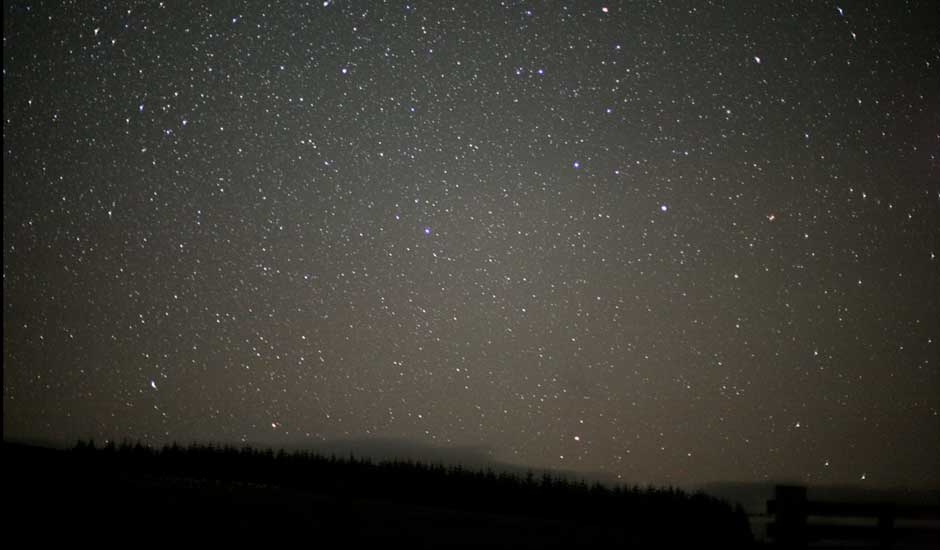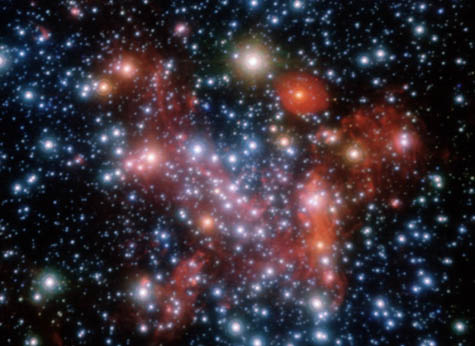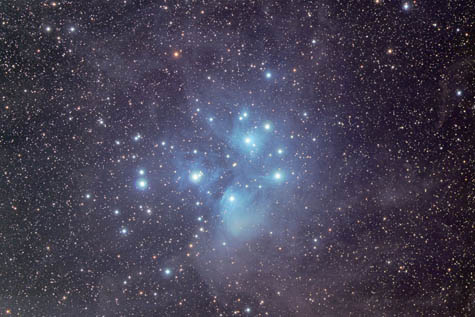Note: This is a guest post by Nicola Twilley.
2009 has been designated by the United Nations as the International Year of Astronomy (IYA), marking the 400th anniversary of Galileo’s telescope. The excitement is starting early, with Galloway Forest Park in Scotland announcing its plans to become Europe’s first “dark sky park.”
The forest, which covers 300 square miles and includes the foothills of the Awful Hand Range, rates as a 3 on the Bortle scale. The scale, created by John Bortle in 2001, measures night sky darkness based on the observability of astronomical objects. It ranges from Class 9 – Inner City Sky – where "the only celestial objects that really provide pleasing telescopic views are the Moon, the planets, and a few of the brightest star clusters (if you can find them)," to Class 1 – Excellent Dark-Sky Site – where "the galaxy M33 is an obvious naked-eye object" and "airglow… is readily apparent." Class 3 is merely "Rural Sky," meaning that while "the Milky Way still appears complex... M33 is only visible with averted vision."
The idea of a human-created dark sky park is fascinating, of course, as are the architectural and landscape modifications that must be undertaken by town councils and park management services in order to qualify for a Bortle score. For example, Observatory Park in Montville Township, Ohio, has been awarded provisional IDSP status (Silver Tier), contingent on "the completion of the park’s outdoor lighting scheme, visitor’s center, and enactment of outdoor lighting ordinances in surrounding townships." The Geauga Park District submitted their 34-page Lighting Management Plan (read the PDF) in August 2008, detailing various proposals for the reduction of local skyglow (as opposed to natural airglow), light trespass, and glare. These include full shading for all light installations and lighting curfews, as well as strategic tree planting.
The concept of shaping the ground to frame and enhance the sky is not new (for instance, James Turrell’s Skyscapes are an architectural attempt to achieve "light effects and perceptual events" centered on a complex reframing of the sky). Nonetheless, the idea of rebuilding and landscaping an entire community specifically for the purposes of experiencing darkness is an exciting one – as is the idea of UNESCO, official protector of World Heritage Sites, attempting to safeguard dark skies as a "natural and cultural property."
Scotland, with its northerly latitude and constant rain (which cleans the atmosphere of dust), has perhaps discovered its global tourist niche: A spokesman for VisitScotland, which is working closely with Dark Sky Scotland, ventured that "the night sky could be as important for tourism as the landscape."

[Image: The dark skies above Galloway Forest Park, Scotland, via the Guardian].




没有评论:
发表评论